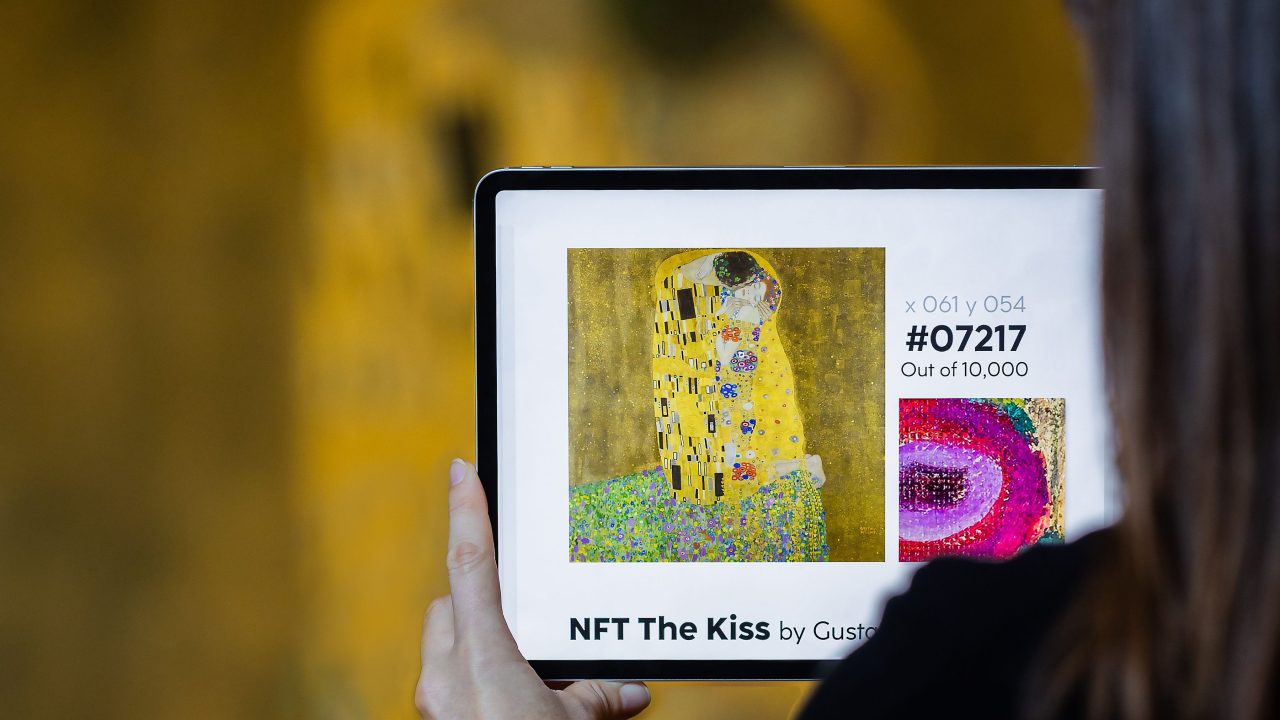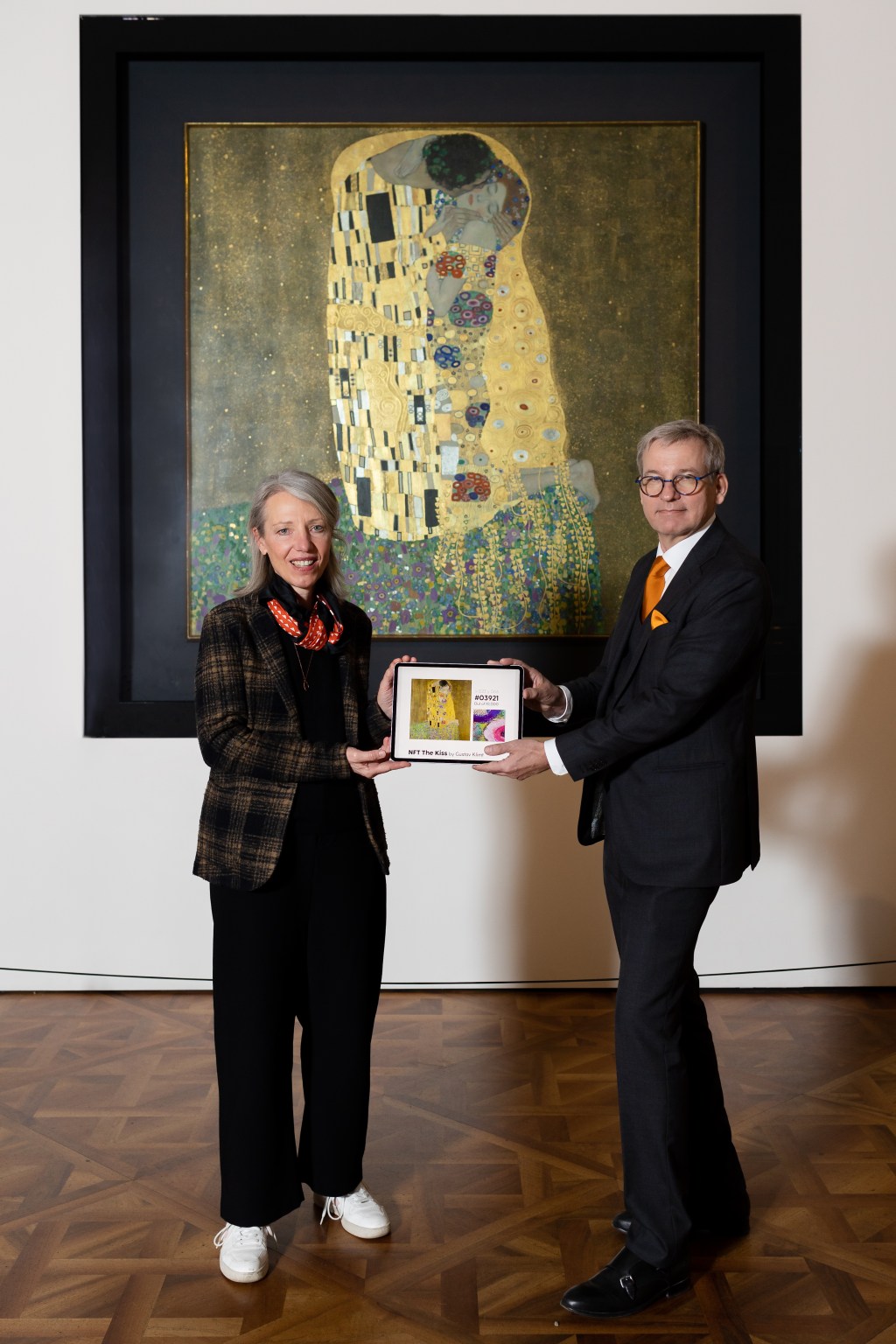
I’ve long been interested in the ways that today’s cultural organizations go about raising the necessary funds to support their work—especially non-traditional approaches. The most recent example that caught my eye was from the Gallery Belvedere in Vienna, Austria, which leveraged one of the most famous works in its collection—Gustav Klimt’s The Kiss—to raise funds through a non-fungible token (NFT). To learn more about this project, I talked to Wolfgang Bergmann, the museum’s Chief Financial Officer, to find out how the museum worked to accomplish this feat. The following are excerpts from our conversation.
Adam Rozan: Please introduce yourself and share what you do.
Wolfgang Bergmann: My name is Wolfgang Bergmann, and I am proud to be managing CFO or Chief Financial Officer at the Austrian Gallery Belvedere in Vienna since 2017. Our museum celebrated its three hundredth anniversary in 2023 and is one of the first publicly opened museums in the world, showcasing well-known artworks from the Middle Ages to contemporary art. We are a non-profit institution wholly owned and partly (one-third of the budget) funded by the Republic of Austria.
AR: This conversation is ultimately about the NFT that Belvedere developed of Gustav Klimt’s The Kiss painting; it’s also about innovative museum practice, new ways to think about digital work, and fundraising.
To start, can you share what is an NFT?
WB: A non-fungible token is primarily a digital certificate of ownership written in the blockchain. An NFT is unique instead of fungible tokens (e.g., blockchain currencies like Bitcoin) and could take on various use cases (such as art, collectibles, etc.).
AR: Okay, Belvedere’s Kiss NFT is, therefore, a digital copy of the painting broken up into ten thousand purchasable digital tiles. Is that correct?
WB: We created a digital copy of The Kiss composed of ten thousand tiles, each representing a unique image. It’s a playful way to engage with the artwork and has attracted a new global audience to art and museums. It’s a positive step toward embracing new technological interactions.
AR: Headlines today are proclaiming that the NFT craze or phase is over, but before we talk about your take on where NFTs are today, can you share how the Kiss NFT was received and how many NFTs the museum has sold to date?
WB: As one of the first museums [to release an NFT] worldwide, we dropped The Kiss NFT on Valentine’s Day 2022. The media response was excellent and international. When we decided to work with this new technology, we knew we would use the most famous masterpiece of our Gustav Klimt collection, The Kiss. With more than 4.4 million dollars in revenue, it’s the most successful project of (its kind) for a museum.

AR: That’s impressive. An initial ten thousand tiles were offered, and you have how many remaining?
WB: 2,600 NFTs have been sold so far, and 7,400 are still available—among them some of the most coveted parts of the painting, e.g., the lips or signature of Gustav Klimt.
AR: Let’s take a step back to the drawing board to discuss how this idea took off at the museum, and if you can, please share some of the process as well.
WB: [To start] we looked at various opportunities and perspectives to use blockchain technology and decided to start with an NFT. Coming out of a pandemic with multiple closures and travel restrictions, we sought a way to engage global audiences with a Belvedere project, and an NFT effort met all those criteria.
AR: Let’s dive a little deeper here: Who’s around the table for these discussions, and if I understand correctly, this is a standing meeting?
WB: We’ve set up an internal work group with colleagues from the marketing, online, PR, legal, merchandise, and accounting departments.
When we settled on doing an NFT, we partnered with Arteq, an established company in Vienna, as our technical partner and worked with a legal agency.
AR: Were there any dissenting opinions or concerns among the staff at the Belvedere regarding this project?
WB: We were convinced that pursuing The Kiss painting was right for this project. The Belvedere’s board supported it, and we engaged in discussions with relevant authorities to ensure a smooth process. While the idea was straightforward, executing it was a significant undertaking.
AR: What’s next for this team and the work you all are doing together? How do you build on the success of the NFT, or is the success here intimidating the group?
WB: We are currently using “Crypto-Winter” to improve our platform, making onboarding new customers easier. We’re also collaborating with the Korean fashion designer Lie Sang Bong on a fashion line and jewelry that features digital tiles, [alongside] Austrian producer CIRO.
AR: You shared that the audience here differs from the traditional Belvedere-goer. How’s that?
WB: Due to the nature of blockchain, we only have limited information on the origin of our NFT holders from data. We only have the wallet IDs and email addresses of our holders. However, through the available information and personal encounters at live events at the museum, we see a very diverse audience. Among them are many younger art enthusiasts and buyers from around the world. Because of the enormous media response in Europe, particularly our home market, many of our holders also reside in Austria. We witnessed that most NFT holders are emotionally tied to the artwork, the museum, or Vienna. That’s why many NFT holders have also dedicated their NFT to their loved ones and do not want to trade their unique collectible.
AR: Do you see the sales of the NFT picking up for the museum in the future?
WB: We see many opportunities in blockchain technology in the future. Digital art and NFTs are only starting to impact the global art scene. The Kiss NFT was our first project in this direction, with which we benefitted greatly. We are all currently learning about web3 and all its implications, challenges, and offerings for our daily lives. The technological development will lead to more straightforward and customer-friendly solutions, increasing the adoption of blockchain-related services.
AR: At the start of our conversation, I said I would ask for your opinion on the NFT market. Is there a future here, or has this trend run its course?
WB: The Belvedere is an institution with a long history, experiencing many political and economic ups and downs. There have been upheavals in the past that simply do not compare to the problems we encounter these days. Still the Belvedere has stood the test of time. This project too will accompany the Belvedere permanently. Winter is followed by spring—and that will hold true for “Crypto-Winter” as well.
AR: Final question: What should readers who want to purchase a tile do?
WB: Log on to www.thekiss.art, browse our www.thekissnft.medium.com blog, and familiarize yourself with our project. And if you want to give a special once-in-a-lifetime gift, you should declare your love with The Kiss NFT and dedicate it on our website.
Valentine’s Day is just around the corner!








